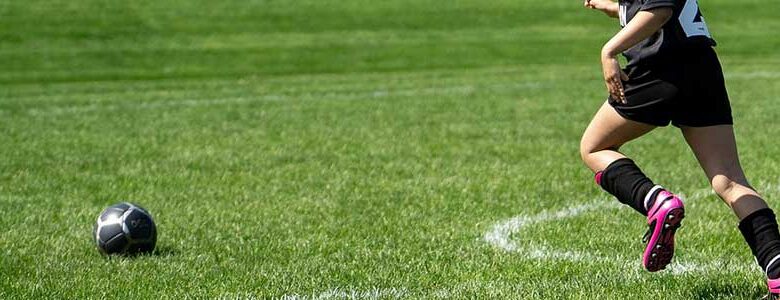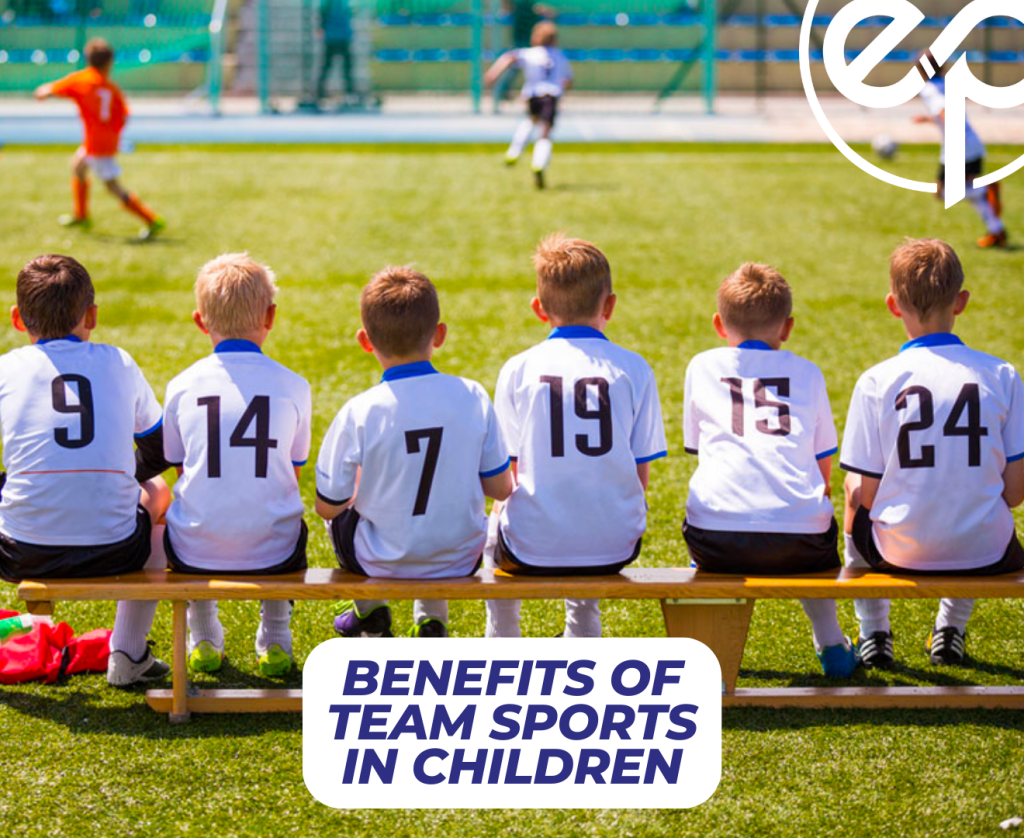
How team sports change kids brains is a fascinating topic. From boosting cognitive skills to fostering social-emotional growth, team sports offer a unique blend of physical activity and social interaction that can significantly impact a child’s development. This exploration delves into the multifaceted ways team sports influence a child’s brain, considering both the positive and potential negative aspects.
This in-depth look at how team sports affect kids’ brains will explore various facets of their development, including cognitive abilities, social-emotional learning, physical well-being, team dynamics, motivation, academic performance, and even potential downsides. We’ll look at how team sports impact memory, attention, problem-solving, empathy, cooperation, and more. It’s a complex interplay, and understanding the nuances is key to making informed decisions about children’s activities.
Cognitive Development
Team sports are more than just physical activities; they profoundly impact a child’s cognitive development. Engaging in these activities fosters crucial skills like memory, attention, and problem-solving, contributing to well-rounded intellectual growth. The dynamic nature of team sports challenges children to think critically and adapt to changing situations, which ultimately benefits their overall cognitive abilities.Team sports offer a unique learning environment where children develop not only physical prowess but also mental agility.
The collaborative nature of these activities encourages children to understand diverse perspectives, anticipate teammates’ actions, and strategize for optimal performance. These experiences contribute to improved memory, attention span, and problem-solving skills.
Impact on Memory and Attention Span
Team sports necessitate constant attention and memory retention. Remembering plays, strategies, and the positions of teammates requires active recall and rehearsal. This repetitive process strengthens memory circuits in the brain, improving both short-term and long-term memory. The fast-paced nature of many team sports also enhances attention span, forcing children to focus on crucial details and react quickly to changing situations.
Practice sessions and games often require children to recall specific plays, remember instructions, and anticipate their teammates’ actions. This repeated engagement strengthens neural pathways associated with memory and attention, leading to improved cognitive performance in other areas.
Influence on Problem-Solving Skills
Team sports present children with a constant stream of problems that need immediate solutions. Adapting to unexpected plays, strategizing to overcome obstacles, and reacting to mistakes require children to think critically and find effective solutions on the fly. This dynamic environment cultivates problem-solving skills that extend beyond the sports field.Specific examples of problem-solving tasks include developing strategies to outmaneuver opponents, adapting to changing game conditions, or resolving conflicts within the team.
These challenges encourage children to analyze situations, identify potential solutions, and make quick decisions under pressure, which are vital skills for success in various aspects of life.
Specific Cognitive Tasks Improved by Team Sports
- Spatial Reasoning: Understanding and navigating the playing field, predicting the trajectory of objects (like a ball), and calculating distances and angles are key spatial reasoning tasks that are often improved through team sports. Children learn to perceive and interpret their surroundings in a dynamic environment, improving their spatial awareness.
- Decision-Making: Quick decisions under pressure are frequently required in team sports. Making split-second decisions to pass, shoot, or defend involves evaluating various options and reacting effectively to the situation. This practice enhances decision-making skills that are applicable in everyday life.
- Strategic Thinking: Team sports require the development of game plans, tactical approaches, and understanding of opponent weaknesses. This strategic thinking involves analyzing information, anticipating actions, and planning ahead to achieve the desired outcome. It enhances problem-solving and critical thinking skills.
Comparison of Cognitive Abilities
| Cognitive Ability | Children Involved in Team Sports | Children Not Involved in Team Sports |
|---|---|---|
| Memory | Stronger memory retention for plays, strategies, and teammates’ roles | May exhibit weaker memory for sequences and details |
| Attention Span | Higher attention span, capable of focusing on multiple aspects of the game | May have shorter attention spans, difficulty focusing on prolonged tasks |
| Problem-Solving | Improved ability to analyze situations, identify solutions, and make quick decisions | May struggle with problem-solving tasks requiring quick responses and adaptations |
| Strategic Thinking | Develops a comprehensive understanding of game plans and tactics | May not have developed strong strategic thinking skills |
Types of Thinking Encouraged
- Analytical Thinking: Team sports necessitate analyzing situations, assessing opponent strengths and weaknesses, and developing strategies to counteract them. This analytical approach is vital for effective decision-making and problem-solving.
- Creative Thinking: Developing innovative strategies to outwit opponents, adapting to unexpected situations, and finding creative solutions to challenges are all aspects of creative thinking fostered by team sports. It allows children to think outside the box.
- Critical Thinking: Team sports often involve evaluating situations, identifying potential risks and benefits, and making informed decisions. This process sharpens critical thinking skills.
Social-Emotional Learning
Team sports are more than just games; they’re powerful catalysts for developing essential social-emotional skills in children. From fostering empathy to honing communication abilities, these activities provide a unique environment for growth and learning beyond the playing field. Understanding the role team sports play in shaping a child’s social-emotional landscape is crucial for their overall well-being and future success.Beyond the obvious physical benefits, team sports offer a rich tapestry of social-emotional experiences.
Children learn valuable lessons about cooperation, communication, and conflict resolution within a structured framework. These experiences contribute significantly to their emotional intelligence, helping them navigate complex social situations with greater confidence and resilience.
Empathy and Compassion in Team Sports
Team sports naturally cultivate empathy and compassion. Players learn to understand and share the feelings of their teammates, recognizing that success hinges on everyone contributing their best. For example, a player who sees a teammate struggling with a play can offer support and encouragement, fostering a sense of camaraderie and mutual respect. This shared experience of supporting one another extends beyond the immediate team and builds a sense of community.
Cooperation and Communication Skills
Team sports are inherently collaborative. Children learn to cooperate effectively by working together towards a common goal, understanding that individual brilliance is enhanced by teamwork. Effective communication is essential in coordinating strategies and responding to changing game situations. Learning to listen actively, give clear instructions, and receive feedback are all vital communication skills honed within the dynamic environment of a team sport.
Managing Conflict in Team Sports vs. Solitary Activities, How team sports change kids brains
Team sports provide a structured environment for children to learn to manage conflicts with peers. Coaches and teammates often facilitate constructive dialogue and problem-solving to address disagreements and misunderstandings. In contrast, solitary activities may not offer the same opportunities for direct conflict resolution or learning to compromise. Learning to negotiate, compromise, and resolve conflicts constructively are vital life skills.
Teaching Teamwork and Leadership
Team sports offer numerous opportunities to teach children about teamwork and leadership. Coaches often assign roles and responsibilities within the team, encouraging children to take on leadership responsibilities, such as motivating their teammates or leading drills. These experiences help them develop crucial leadership qualities, such as initiative, responsibility, and the ability to inspire others. Moreover, they learn to follow instructions, which is critical for a team to function effectively.
Social-Emotional Skills and Team Sports
| Social-Emotional Skill | How Team Sports Support It |
|---|---|
| Empathy | Understanding and sharing the feelings of teammates, recognizing their struggles, and offering support. |
| Cooperation | Working together towards a common goal, recognizing the importance of each member’s contribution. |
| Communication | Listening actively, giving clear instructions, receiving feedback, and expressing needs effectively. |
| Conflict Resolution | Learning to negotiate, compromise, and resolve disagreements constructively with peers in a supportive environment. |
| Leadership | Taking on responsibilities, motivating teammates, and inspiring others towards a common goal. |
Physical Health and Well-being
Team sports offer a unique pathway for children to develop not only their cognitive and social skills but also their physical well-being. Engaging in these activities provides a multitude of benefits, from fostering healthy habits to boosting self-esteem and mental resilience. The physical demands of team sports, coupled with the social interaction, contribute significantly to a child’s overall health and happiness.Participating in team sports can profoundly impact a child’s physical health.
The consistent physical activity strengthens muscles, improves cardiovascular health, and helps maintain a healthy weight. Regular exercise is crucial for preventing chronic diseases later in life, and team sports are a fun and engaging way to achieve this. This active lifestyle, promoted through team sports, also cultivates healthy habits that extend beyond the playing field.
Physical Benefits of Team Sports
Team sports provide a comprehensive workout, incorporating elements of endurance, strength, and agility. Children participating in these activities experience a wide range of physical benefits. These activities build bone density, increase cardiovascular fitness, and improve overall body composition. The varied movements and intensities involved in different sports help develop a range of physical skills and capabilities. Moreover, participation in team sports typically encourages a healthy lifestyle.
Influence on Self-Esteem
Team sports offer a platform for children to develop a sense of belonging and accomplishment. Successes on the field, both individually and as part of a team, can significantly boost self-esteem. Learning to work collaboratively with teammates, accepting both wins and losses, and overcoming challenges fosters resilience and a positive self-image. The shared experience and mutual support within a team environment play a vital role in this development.
Link Between Physical Activity and Mental Health
Physical activity, including team sports, has a demonstrable link to mental well-being. Exercise releases endorphins, natural mood boosters, that can alleviate stress and anxiety. Regular participation in team sports provides a structured outlet for physical energy and emotional expression, contributing to a healthier mental state. The social interaction and sense of belonging associated with team sports further contribute to positive mental health outcomes.
A study by the American Heart Association highlights the correlation between regular physical activity and reduced risk of depression and anxiety.
Comparison of Physical Health Outcomes
| Characteristic | Team Sports | Individual Exercise (e.g., Running, Swimming) |
|---|---|---|
| Cardiovascular Fitness | High, due to varied intensity and duration | High, dependent on intensity and duration |
| Muscle Strength & Endurance | High, due to diverse movements and exercises | Variable, depending on the type of exercise |
| Social Interaction | High, fostering teamwork and camaraderie | Low, primarily focused on individual effort |
| Motivation & Consistency | Potentially higher due to team dynamics and shared goals | Reliant on individual discipline |
| Skill Development | Comprehensive, including strategic thinking and cooperation | More focused on specific skills |
Promoting Healthy Lifestyle Choices
Team sports naturally encourage healthy lifestyle choices. The structured environment and emphasis on teamwork often lead to healthy eating habits. Players may be more inclined to eat nutritious foods to support their performance, and coaches frequently emphasize healthy dietary practices. For instance, many team sports programs incorporate nutrition education to guide players towards better choices. The social aspect of team sports can also encourage healthy habits, as children may be more likely to choose healthy options when surrounded by their peers.
Team Dynamics and Leadership
Team sports aren’t just about scoring goals or winning games; they’re powerful learning environments that shape children’s social-emotional growth. Understanding team dynamics and leadership is crucial to fostering a positive and productive experience for young athletes. From the early stages of understanding roles to developing leadership qualities, team sports provide a unique platform for personal development.The interplay of team members, the guidance of coaches, and the nature of the sport itself all contribute to the development of crucial life skills.
This exploration delves into how team sports impact children’s understanding of roles and responsibilities, the cultivation of leadership, the varying impact across different sports, and the influence of team dynamics on individual experiences.
Impact on Understanding Roles and Responsibilities
Team sports provide a structured environment where children learn the importance of roles and responsibilities. They quickly realize that individual actions affect the entire team’s success. Whether it’s a team captain leading the team to victory or a defensive player ensuring the opponent doesn’t score, each role is integral to the overall goal. This fosters a sense of shared responsibility and cooperation, a crucial element for teamwork and success.
Development of Leadership Qualities
Team sports are fertile ground for leadership development. Children learn to motivate their teammates, encourage cooperation, and strategize with their peers. Through these interactions, they develop valuable leadership qualities such as communication, decision-making, and problem-solving skills. A crucial element of this development is learning to delegate tasks and inspire others towards a common goal.
Comparison of Leadership Development Across Different Sports
Different team sports offer diverse avenues for leadership development. In basketball, leadership might involve calling plays and motivating teammates during critical moments. In soccer, it could involve strategic positioning on the field and coordinating with teammates to create opportunities. In baseball, leadership might involve providing encouragement to teammates and making key decisions at crucial points in the game.
These examples highlight the unique demands of each sport and the diverse ways children can develop leadership skills within them.
Examples of Positive and Negative Team Dynamics
Team dynamics can significantly affect a child’s experience. A positive team dynamic, characterized by mutual respect, support, and shared goals, fosters a sense of belonging and motivation. Conversely, negative team dynamics, such as conflict, rivalry, or exclusion, can create stress, anxiety, and a sense of isolation. A team that prioritizes teamwork and communication will likely experience greater success and satisfaction.
Impact of Coaches and Teammates
Coaches and teammates play pivotal roles in a child’s growth within a team setting. Coaches provide guidance, structure, and feedback, helping children learn strategies, improve skills, and understand the importance of teamwork. Teammates offer support, encouragement, and a sense of belonging, shaping a child’s social skills and fostering a sense of community. A supportive and positive relationship with teammates and coaches fosters a positive learning environment.
Motivation and Perseverance

Team sports offer a powerful platform for fostering motivation and perseverance in children. Beyond the physical benefits, these activities cultivate crucial life skills that extend far beyond the playing field. The collaborative nature of team sports provides unique opportunities for children to learn the importance of resilience, goal-setting, and the value of teamwork in achieving success.The dynamic interplay between individual effort and collective success within a team environment is instrumental in shaping a child’s understanding of perseverance.
Success often hinges on the ability to overcome challenges, learn from setbacks, and maintain focus, qualities that are directly applicable to academics, social interactions, and future endeavors.
How Team Sports Encourage Perseverance
Team sports provide a rich environment for children to learn and apply the crucial skill of perseverance. Children face challenges in the form of difficult plays, tough opponents, and personal struggles within the team dynamic. Overcoming these hurdles strengthens their resilience, teaching them to keep trying even when faced with adversity.
Team sports are amazing for developing kids’ brains, fostering teamwork and discipline. But did you know that engaging in these activities can indirectly contribute to saving money? For example, kids who get more active and maintain a healthy weight can see reduced medical costs later in life, just like how participating in a sport can build confidence and social skills.
This ties into how team sports help kids learn valuable life lessons, like perseverance and sportsmanship, ultimately shaping their future success. Plus, by managing their weight, they can also save money in the long run, as detailed in this helpful guide on losing weight can save money. It all boils down to the incredible impact team sports have on a child’s development.
The Role of Teamwork in Motivation
Teamwork is intrinsically linked to motivation. Children understand that their individual contributions, when combined with those of their teammates, can lead to a shared victory. This collaborative approach fosters a sense of shared responsibility and purpose, making the pursuit of goals more engaging and motivating. Seeing the team succeed together reinforces the value of collective effort and instills a powerful sense of belonging.
Impact of Setbacks and Failures
Setbacks and failures are inevitable parts of any sport, and team sports are no exception. However, these experiences can be transformative. When handled constructively, failures within a team environment can teach children valuable lessons about problem-solving, adaptability, and the importance of learning from mistakes. Coaches and teammates who encourage reflection and support during these moments help children develop resilience and the ability to bounce back from adversity.
A team environment can also help children recognize that failure is a necessary step on the path to success.
Comparison of Team and Individual Sports
Team sports often encourage a stronger sense of collective responsibility and shared motivation. While individual sports foster self-reliance and individual achievement, team sports emphasize the importance of collaboration and mutual support. This shared experience can lead to a stronger sense of purpose and commitment to achieving common goals. In team sports, the support from teammates and coaches can be instrumental in helping children overcome challenges and maintain motivation, whereas individual sports might not always provide this same level of external support.
Developing Intrinsic Motivation
Intrinsic motivation, the drive to engage in an activity for its inherent satisfaction, can be cultivated within team sports. When children are given opportunities to make choices about their participation, contribute to strategy, and feel a sense of ownership over their roles within the team, they are more likely to develop a deeper sense of engagement and enjoyment. Coaches who foster a positive and supportive environment, allowing for player input and encouraging personal growth, can cultivate this intrinsic motivation.
A sense of autonomy and mastery over one’s contribution to the team can be powerful motivators.
Team sports are amazing for kids’ brain development, fostering crucial social skills and teamwork. While the benefits of these activities are well-documented, recent FDA approval for a ready-to-use glucagon, Gvoke, from Xeris Pharmaceuticals ( fda oks ready use gvoke glucagon xeris ) highlights the importance of medical advancements in children’s health. Ultimately, team sports help kids build resilience and confidence, essential for navigating life’s challenges.
Impact on Academic Performance
Team sports aren’t just about scoring goals or winning games; they profoundly influence a child’s development in ways that extend far beyond the playing field. This influence often manifests in improved academic performance, a connection that stems from the transferable skills cultivated through participation. From fostering focus and time management to enhancing teamwork and collaboration, team sports provide a unique pathway to academic success.The correlation between participation in team sports and academic achievement is demonstrably positive.
Studies consistently show a link between athletic involvement and higher grades, particularly in areas like math and science, where problem-solving and strategic thinking are crucial. This is likely due to the development of crucial cognitive and social-emotional skills, which in turn positively affect a student’s approach to learning.
Correlation Between Sports and Academic Success
Numerous studies highlight a positive relationship between participation in team sports and improved academic performance. Students involved in team sports often exhibit higher grades and test scores. This connection isn’t simply about physical prowess; it’s about the development of essential skills that translate directly into the academic realm.
Benefits of Team Sports on Focus and Concentration
Team sports demand focus and concentration. Athletes must concentrate on their teammates’ movements, the game’s strategy, and their own performance. This consistent need for focus naturally translates into improved concentration in the classroom. Regular practice in maintaining focus during games translates to improved attention spans in school.
Time Management Skills in Team Sports and Academics
Team sports require meticulous time management. Athletes need to balance training schedules, practice sessions, and game days with their academic responsibilities. This experience in juggling competing demands fosters valuable time management skills. This translates into the ability to effectively prioritize tasks and allocate study time in an organized manner, crucial for success in school.
Teamwork and Collaboration in Sports and Academics
Team sports are inherently collaborative. Athletes learn to work together, support their teammates, and contribute to a shared goal. This experience in teamwork and collaboration is directly applicable to the academic environment. Students involved in team sports often exhibit greater willingness to cooperate with peers on group projects, fostering a more positive and productive learning atmosphere.
Summary Table: Team Sports and Academic Performance
| Aspect of Academic Performance | How Team Sports Contribute |
|---|---|
| Grades | Increased focus and time management skills lead to better study habits and improved performance. |
| Test Scores | Improved concentration and problem-solving skills from sports activities translate into better performance on assessments. |
| Time Management | Balancing training, practice, and games with academics develops crucial time management skills. |
| Collaboration | Teamwork and cooperation in sports enhance collaborative skills, leading to improved participation in group projects and assignments. |
| Focus and Concentration | Consistent need for focus during sports translates into enhanced attention span and concentration in the classroom. |
Potential Negative Impacts: How Team Sports Change Kids Brains

The allure of team sports, with their camaraderie and competitive spirit, often overshadows the potential downsides. While fostering crucial life skills, intense involvement in organized sports can, unfortunately, create negative experiences for children. Understanding these potential pitfalls is crucial for parents and coaches to ensure a balanced and positive sporting journey for young athletes.Intense pressure to perform, fueled by parental expectations, coach demands, or societal pressures, can significantly affect a child’s well-being.
This pressure can manifest in anxiety, stress, and even depression if not managed effectively. Competitiveness, while a valuable trait, can sometimes become detrimental, fostering unhealthy rivalries and a focus on winning above all else.
Pressure to Perform
Excessive pressure to perform can negatively impact a child’s psychological well-being. Children may experience anxiety and stress related to meeting performance expectations. This pressure can manifest as a fear of failure, leading to decreased motivation and self-esteem. When the focus shifts from enjoying the game to achieving a specific outcome, the child’s intrinsic motivation is diminished. For example, a young soccer player might start to dread practices and games if they feel constant pressure to score or win.
Team sports are amazing for shaping young minds. They teach kids crucial life skills like teamwork and discipline, which directly impact their brain development. Considering the importance of fostering these skills, exploring the best cities to raise a family like these becomes even more vital. Ultimately, these activities are fantastic for shaping well-rounded, well-adjusted children.
Negative Impacts of Competitiveness
Unhealthy competitiveness within team sports can create an environment of negativity. Children may experience intense pressure to outperform their teammates, leading to strained relationships and feelings of inadequacy. This can be especially detrimental if the focus shifts from teamwork and mutual support to individual achievement. Examples of this are easily observed in youth sports leagues where players might not cooperate or even taunt teammates for mistakes.
Excessive Focus on Winning
An overemphasis on winning can negatively impact the child’s experience of the sport. The focus on victory might overshadow the joy of playing, the importance of sportsmanship, and the development of crucial life skills. If winning becomes the sole objective, children might develop a sense of entitlement or frustration if they don’t achieve success. Children may learn to prioritize winning over fair play and respect for opponents, potentially harming their long-term development.
Stressful Situations in Team Sports
Several situations within team sports can be highly stressful for children. Intense competition, particularly during crucial matches or tournaments, can be overwhelming. Harsh criticism from coaches, unfair judgments from referees, or difficult team dynamics can contribute to stress. Furthermore, the pressure to maintain a specific level of performance, especially during a critical game or tournament, can create significant stress for children.
For instance, a child experiencing a significant injury during a game might experience high levels of stress, not only physically but also emotionally.
Illustrative Examples
Team sports offer a unique platform for children to learn and grow, impacting their development in profound ways. Beyond the physical prowess, the experiences within these environments shape their cognitive, social-emotional, and physical well-being. These examples showcase how team sports can positively influence a child’s life and, in contrast, highlight potential pitfalls.
A Positive Influence on a Child’s Development
The story of young Maya exemplifies the positive impact of team sports. Maya, a naturally shy eight-year-old, joined a local soccer team. Initially, she struggled with communication and collaboration. However, through the structured environment of practices and games, Maya learned to communicate effectively with teammates, offering support and receiving it in return. The experience fostered her confidence and leadership skills.
She learned to accept constructive criticism and use it for improvement. Maya’s involvement in the team led to enhanced self-esteem and a stronger sense of belonging.
A Child Experiencing Negative Impacts
Unfortunately, not all experiences with team sports are positive. Ten-year-old Liam, a highly competitive swimmer, experienced immense pressure to excel. Constant comparisons with other swimmers and relentless parental expectations created a toxic environment. Liam began to dread practices, fearing failure and criticism. The pressure to perform negatively impacted his mental well-being and motivation.
This highlights the crucial role of supportive coaching and balanced expectations in team sports.
Case Study: Cognitive Abilities
A case study of a 12-year-old baseball player, Ethan, reveals the cognitive benefits of team sports. Ethan’s participation in baseball fostered his strategic thinking. He learned to anticipate opponents’ moves, analyze game situations, and develop tactical approaches to achieve team goals. The game’s complex interplay required him to rapidly process information, improve his decision-making abilities, and enhance his problem-solving skills.
Improving Social Skills Through Example
Team sports provide opportunities for children to interact and collaborate with diverse individuals. Sarah, a 10-year-old basketball player, initially struggled with assertiveness and communication with teammates from different backgrounds. Through team activities, she learned to express her opinions respectfully and to appreciate diverse perspectives. The experience led to enhanced communication and conflict-resolution skills. Learning to navigate team dynamics and social interactions improved her overall social competence.
Resilience Through Challenges
The challenges within team sports can be instrumental in building resilience. Twelve-year-old Olivia, a dedicated member of the school’s volleyball team, faced a significant setback when she suffered a knee injury. Initially, the injury demotivated her. However, with the support of her coach and teammates, Olivia found strength in her perseverance and focused on her recovery. This experience allowed her to develop resilience and adapt to adversity, fostering a greater sense of self-reliance.
The support system surrounding her helped her bounce back and ultimately return to the sport.
Concluding Remarks
In conclusion, how team sports change kids brains is a profound and multifaceted influence. While offering numerous benefits for cognitive development, social-emotional growth, and physical well-being, team sports also come with potential drawbacks. A balanced approach, understanding the nuances of each child’s experience, and mindful coaching are crucial for maximizing the positive impacts and mitigating potential negative ones.
The key takeaway is that team sports can be a powerful force for shaping young minds, but careful consideration is essential.





